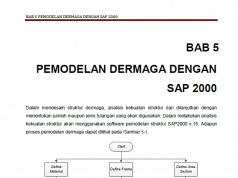

In the following parts, only the frame model will be taken as an example. You can verify the model via activating the options in red ellipse in the Fig.5.13Ĭlick OK, you will see the whole model as shown in Fig.5.14 or Fig.5.15.įSEC1 represents the section type. Repeat the operation until all members are correctly defined.ġ3) After you finish the modeling, click View=>Set Display Options. Click at the beginning node and the ending node of a member, press Enter on keyboard to confirm your operation. Section: Choose the type defined, here is FSEC1 Moment Releases: Continuous leads to a frame Pinned leads to a truss.ġ2) Draw a member of the frame or truss.

Choose Plastic defined in Step 6) and click OK.ġ1) Draw=>Draw Frame/Cable/Tendon or click the button in Fig.5.11 to draw the model.Ī dialog box will be popped-up as Fig.5.12. 10) Fill the area and moment of inertia in the corresponding textbox and click OK. And in the frame model, besides the Cross-secttion (axial) area, Moment of inertia about 2 axis and Moment of Inertia about 3 axis are required. After the material properties are defined, click OK and return to the main menu.ħ) Click Define=>Section Properties=>Frame Sections and then we can getĨ) Click Add New Property button and choose Other in Frame Section Property Type, then we can get a dialog box as Fig.5.8.ĩ) Click General,a dialog box of Property Data will be shown as Fig.5.9.įor the truss model, only Cross-section (axial) area is essential and others can be ignored.

Material Property Data dialog box as Fig.5.6.įill the items in the dialog box of Fig.5.6. We will get the grid lines as shown in Fig.5.4.ĥ) Click Define=>Materials, Define Materials dialog box will appear as Fig.5.5.Ħ) Click Add New Material button. For 3D structures, this item can be filled according to the real structure.Ĥ) Fill the items as in Fig.5.3. For the planar structure, 1 is filled in Z direction under “Number of Grid Lines”. For the bar: Area = 2e-5 m2 Moment of inertia = 4e-11 m4 Fig.3 Cross sectionĤ Material Properties Density = 1.2e3 kg/m3 Young’s Modulus = input by users Poisson’s rate = 0.3.ĥ Procedure of Static Analysis 1) Open SAP2000 v14 (the interface is shown as Fig.5.1)Ģ) Click File=>New model or click the shortcut will appear.ģ) Choose N,m,C as the default units and Grid Only as template, then we will get the Quick Grid Lines dialog box as Fig.5.3. If the structure is simplified into a frame, both the cross sectional area (A) and moment of inertia (I) in different directions are required. If the structure is simplified into a truss, the cross sectional area (A) is required.

The elemental component of the structure has a section as shown in Fig. A point load F = 14 N was employed in the test.ģ Section Properties In SAP2000 one can use an equivalent section or real dimension to define a section. 2 shows the simplified structures including the supports. The connections can be simplified as fixed or hinged, correspondingly a planar frame or a planar truss can be obtained. The structure as shown in Fig.1 can be simplified into a planar structure and 1 Here we just take it as an example to demonstrate the procedure of static analysis by SAP2000 version 14 step by step.ģ Simplification of the Structure All the structures to be analyzed must be simplified (idealized) due to the complexity of the real structures.
#Panduan sap 2000 version 14 pdf how to#
The following instruction shows how to establish an FEM model and then how to perform static analysis with SAP2000 step by step.įig.1 shows a structure model designed with KNEX in 2008. Loads: force, displacement, acceleration etc. Material properties: density, Young’s Modulus, Poisson’s ratio and so on Connection type: fixed joint or pinned connection Support type: fixed, pinned, roller or free. Structural geometry: structural shape Real constant: material properties such as area, moment of inertia and so on. SAP2000 V14 Tutorial 1 Static Analysis Essential An FEM static analysis usually involves the following essential issues: structural geometry, real constant, material properties, connection type, support, and loads.


 0 kommentar(er)
0 kommentar(er)
